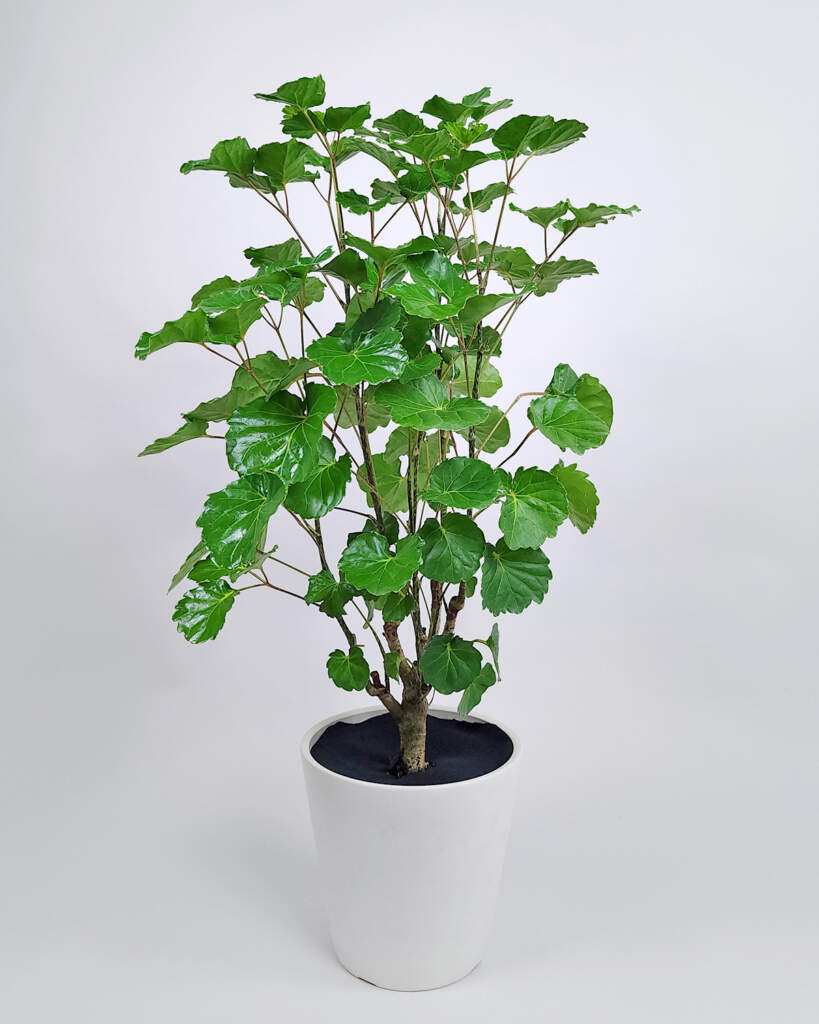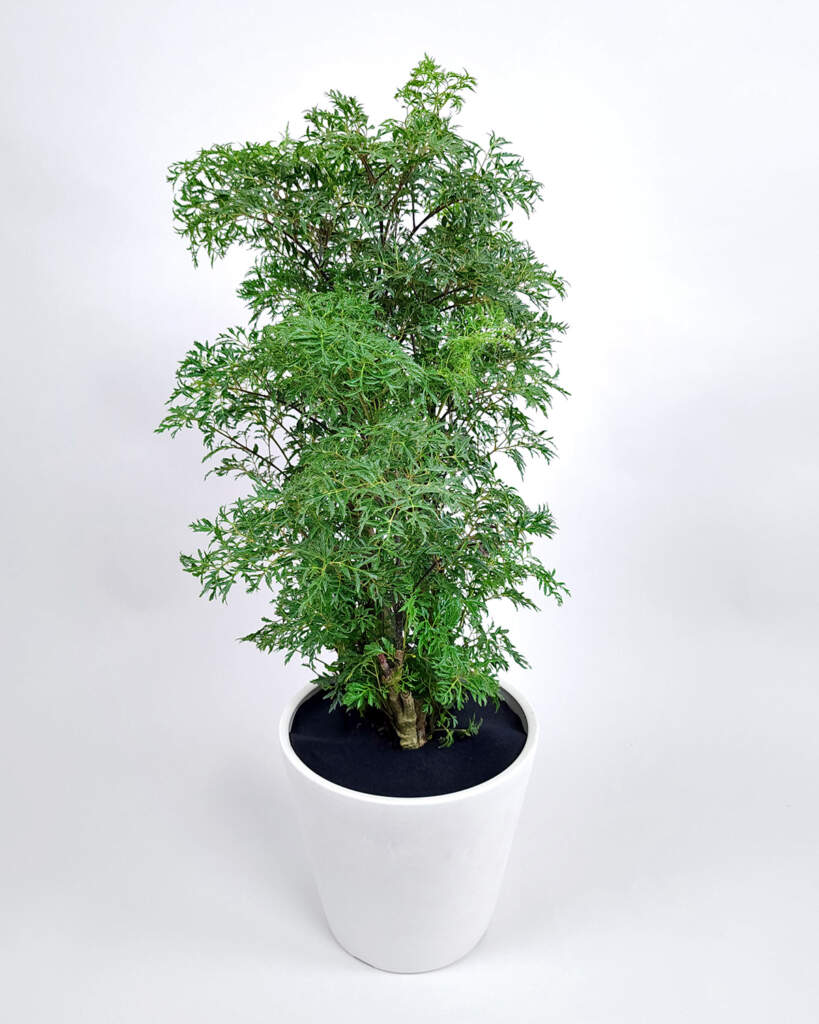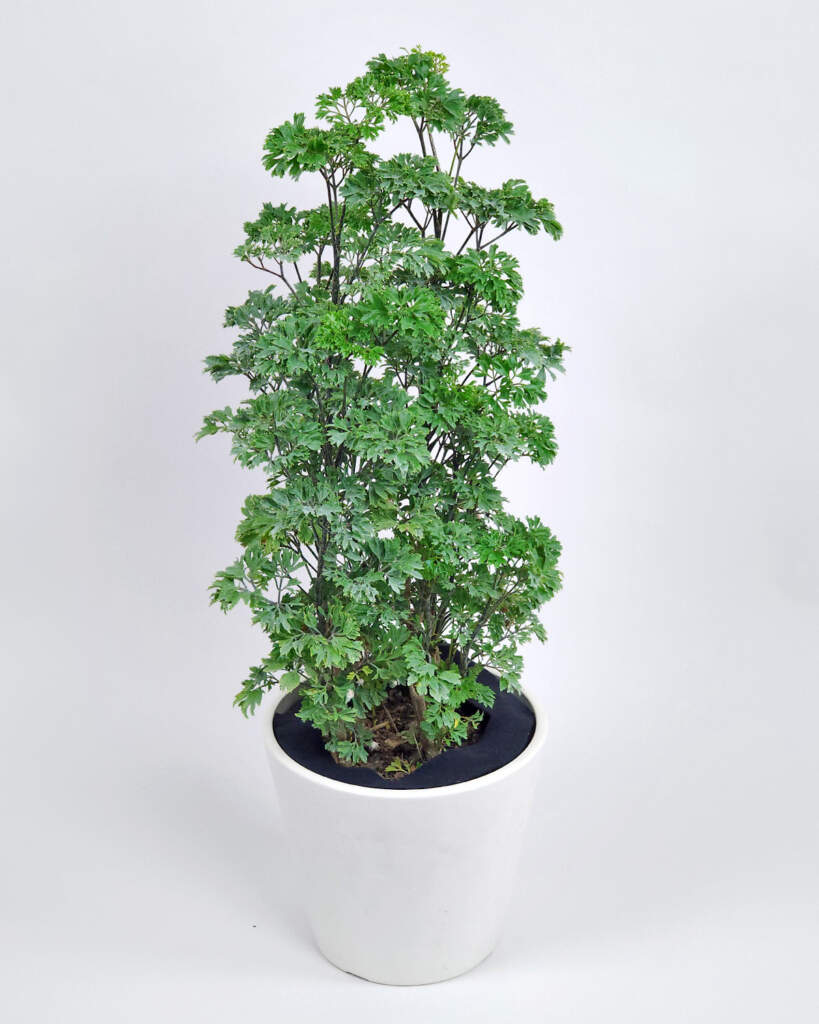Aralia plants, belonging to the Araliaceae family, are renowned for their ornate foliage and architectural presence. These plants, originating from various regions across Asia and the Americas, offer a multitude of species and cultivars, each with unique characteristics. This guide delves into their origins, popular cultivars, and provides detailed care instructions to help you successfully cultivate these striking plants.
The Balfour aralia (Polyscias balfouriana) is a popular houseplant cherished for its lush, deep green foliage and elegant, tree-like form. As this tropical plant matures, proper harvesting can encourage bushy growth and provide cuttings for propagation. Learning the ideal timing and techniques for harvesting will keep your Balfour aralia thriving for years to come.
When to Harvest Balfour Aralia
The best time to harvest a Balfour aralia depends on your goals. Here are tips on timing for optimal results
Propagation
To propagate new plants from cuttings harvest in spring and summer when growth is most active. The increased light and warmth of these seasons boosts root development. Avoid harvesting during fall and winter dormancy.
Leaf Harvest
You can harvest leaves for decorative or culinary uses any time of year. However, growth slows in fall and winter, so harvest more lightly during these periods. The plant can better withstand harvests when it’s vigorously growing.
Pruning for Shape
Prune to shape the plant as needed from early spring through summer. Avoid heavy pruning in fall and winter to prevent shock.
Techniques for Successful Harvests
Follow these simple techniques when harvesting your Balfour aralia:
Gathering Cuttings for Propagation
- Select a stem 6+ inches long with several leaves.
- Use sterile, sharp shears to cut just below a node where leaves attach.
- Strip off lower leaves and dip the cut end in rooting hormone.
- Pot the cutting in well-draining soil. Water well and provide bright, indirect light.
Harvesting Leaves
- Choose mature, healthy leaves with no blemishes.
- Use clean shears to cut each leaf near the base, above the leaf stem.
- Rinse harvested leaves in cool water and pat dry with a paper towel.
Pruning for Shape
- Trim back leggy growth and any dead or damaged stems.
- Pinch or cut stems above a node to encourage bushy new growth.
- Wipe tools with alcohol between cuts to prevent disease spread.
Post-Harvest Care
- Mist the plant daily for a week after harvesting.
- Resume normal watering and fertilizing routine.
- Monitor for signs of stress like leaf drop.
Tips for Avoiding Overharvesting
It’s easy to get overzealous when harvesting a thriving Balfour aralia Follow these tips to prevent stressing your plant
- Leave at least two-thirds of the plant’s foliage intact after harvesting.
- Allow 6-12 months of recovery between propagation sessions.
- Never remove more than 20% of the foliage at one time.
- Skip harvesting if the plant seems weakened or diseased.
- Reduce harvesting during times of slow growth like winter.
Ideal Harvesting Tools
Having the proper tools makes harvesting easier and safer for your plant:
- Sterilized, by-pass hand pruners or gardening shears
- Small, sharp scissors for detailed cutting
- Clean water for rinsing leaves
- Paper towels for drying
- Rooting hormone powder or gel
- Small, sterile pots for propagation
Troubleshooting Common Harvest Problems
If issues arise after harvesting your Balfour aralia, review these troubleshooting tips:
Leaf drop – This can occur after heavy pruning. Reduce harvests and increase misting until growth rebounds.
Weak growth – Overharvesting leaves and stems strains the plant. Allow periods of uninterrupted growth between harvests.
Stem rot – Use sterile tools and rooting hormone to prevent disease spread during propagation.
Failure to root – Take cuttings only during periods of active growth for the best rooting results.
Achieving an Abundant Harvest
With the right timing and care, the Balfour aralia is a generous plant. Follow these best practices for a lush, vibrant specimen and bountiful harvest potential:
- Harvest only what the plant can afford to lose.
- Time harvests appropriately for propagation, pruning, or leaf gathering.
- Allow adequate recovery periods between harvests.
- Sterilize tools and use rooting aids when propagating.
- Adjust care to help the plant rebound after harvesting.
By carefully honing your harvesting approach, you can maintain the health, vigor, and beauty of your Balfour aralia for years of enjoyment. With a little experience, you’ll be harvesting this tropical gem with ease.

Origins and Diversity of the Aralia
Aralias, sometimes referred to as Spikenards, originate from a wide range of climatic conditions, from the cold mountains of Japan to the tropical regions of Central and South America. This diversity has led to a variety of species, each adapted to its native habitat. Popular species include the Polyscias scutellaria (Shield Aralia), Ming Aralia (Polyscias fruticosa), and the Fatsia japonica (Japanese Aralia), to name a few.
To thrive, aralias require specific conditions that mimic their natural habitat.
Aralias prefer bright, indirect light. Direct sunlight can scorch their leaves, while too little light may cause leggy growth. A north-facing window is ideal for indoor plants.
Most aralia species enjoy a temperate climate, with temperatures ranging from 60-85°F (15-29°C). They also prefer high humidity, which can be achieved through regular misting, using a humidifier, or placing the plant on a pebble tray with water.
Watering requirements vary by species, but most aralias prefer consistently moist soil. Overwatering can lead to root rot, so it’s crucial to let the topsoil dry out slightly between waterings.
A well-draining potting mix is essential. You can create a suitable mix by combining regular potting soil with perlite or orchid bark to improve drainage.
Feed your aralia with a balanced, water-soluble fertilizer every month during the growing season. Reduce feeding in winter when the plant’s growth naturally slows.

Scientific Name: Polyscias scutellaria ‘Balfourii’
Overview: Polyscias scutellaria ‘Balfourii’, commonly known as Balfour Aralia, is a striking houseplant that brings an air of sophistication and tropical beauty to any indoor space. This elegant variety is celebrated for its unique, variegated foliage, featuring deep green leaves with creamy white edges, providing a vivid contrast that catches the eye. Perfect for creating a focal point in a room, ‘Balfourii’ grows upright and can reach up to 4-6 feet in height, making it an excellent choice for adding vertical interest. Adaptable to a range of indoor conditions, it thrives in bright, indirect light and requires moderate watering, making it relatively easy to care for.
This item ships in a grower pot.
Pruning helps maintain the desired shape and size, especially for the bushier cultivars. Trim back leggy growth and remove any dead or yellowing leaves.
Aralias are susceptible to pests like spider mites, mealybugs, and aphids. Regular inspections and prompt treatment with insecticidal soap or neem oil are crucial. Good air circulation helps prevent fungal diseases.
Repot your aralia every 2-3 years or when it becomes root-bound. Choose a pot only slightly larger than the previous one to avoid excessive soil moisture.
Aralias can be propagated from stem cuttings or seeds. For stem cuttings, use a rooting hormone and provide consistent humidity and warmth for best results.
In colder climates, bring outdoor aralias indoors or provide adequate protection. Reduce watering and stop fertilizing during this dormant period.
Variegated aralias need more light than their green counterparts to maintain their unique coloration.

Scientific Name: Polyscias fruticosa
Common Names: Ming Aralia, Polynesian Aralia
Overview: The Ming Aralia (Polyscias fruticosa) is an exquisite and graceful houseplant, cherished for its finely divided, feathery foliage. This elegant plant showcases layers of rich green leaves, creating a lush, dense canopy atop slender, woody stems. Its unique, oriental look adds a sophisticated, natural beauty to any indoor environment. Typically reaching a height of 6-8 feet when grown indoors, it can be easily pruned to maintain a smaller, more compact shape, suiting various spaces from office corners to cozy living rooms. Ming Aralia thrives in bright, indirect light and prefers a consistently moist soil environment, without being waterlogged. Regular misting helps to maintain the humidity levels it loves. It’s a great choice for plant enthusiasts looking for a slightly challenging yet rewarding plant.
Prefers warmer temperatures and higher humidity. Its delicate leaves are prone to browning if conditions are not optimal.
Requires regular pruning to maintain its dense, bushy shape. It’s more tolerant of lower light conditions than other varieties.
Being more cold-tolerant, it’s well-suited for outdoor gardens in temperate regions. It prefers shadier conditions and can tolerate lower humidity levels.

BALFOUR ARALIA Information, Description & More! (Polyscias balfouriana)
FAQ
How do you propagate Balfour Aralia?
Can I cut back my Aralia?
How often do you water Balfour Aralia?
How do I save my Aralia plant?
Can Balfour Aralia be propagated?
A: Yes, Balfour Aralia can be propagated by stem cuttings in the spring or summer months. Make sure to use a rooting hormone and keep the soil consistently moist until new growth appears. Q: How often should I repot my Balfour Aralia plant?
How to grow Aralia balfouriana?
How to Grow Aralia Balfouriana Well-drained soil and the administration of nitrogen-rich fertilizer on a regular basis are beneficial to Balfour Aralia. When the plant is overwatered, it is prone to root rot, so it is best to skip a portion of the watering. Make sure your plant gets at least 2-3 hours of indirect morning light for better growth.
Is Balfour Aralia a good houseplant?
Balfour Aralia is a beautiful houseplant that adds a touch of elegance to any indoor space. With its glossy leaves and unique structure, it’s no wonder why it’s becoming increasingly popular among plant enthusiasts. However, like any plant, Balfour Aralia requires proper care to thrive.
Do Aralia Balfour trees wilt?
The leaves on this shrub-like tree plant are maroon on the undersides and dark green on top, creating a lovely contrast. The Aralia Balfour stump is exceptional since it practically begs you to water it! You should only give it enough water to keep it from wilting, and only water it when it appears thirsty.
